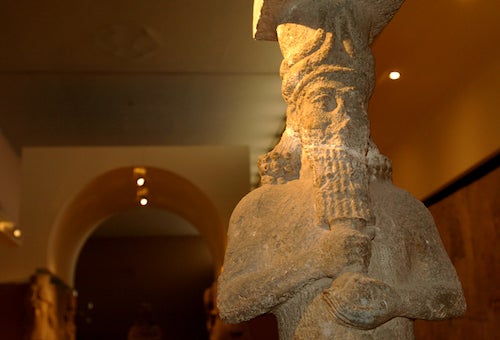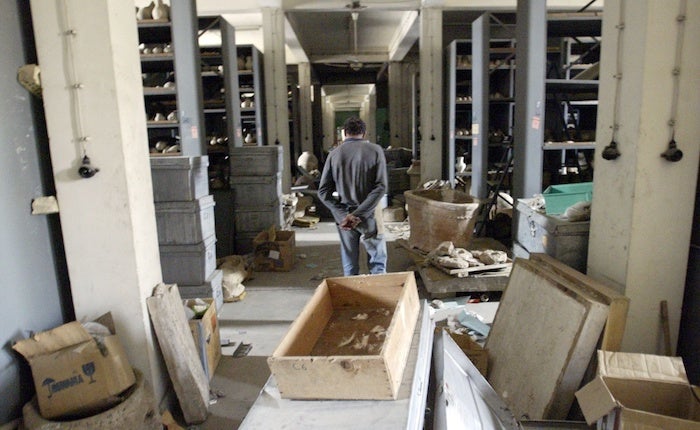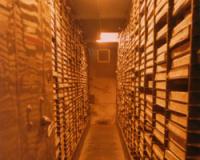
A few days ago, I gave a keynote speech at the XV MAGIS Film Studies Spring School at the FilmForum in Gorizia, Italy. I was invited by professor Leonardo Quaresima, a Germanist at the University of Udine whom I have known for over 35 years, since we both attended a conference on German exiles studies at the Venice Biennale. My topic was the interplay between film archives and the construction of film history, but I began with a curious irony of archives, namely that they are not necessarily permanent.
More than other institutions that make up our social fabric, archives and libraries are perceived by the general public to be bastions of stability, their existence and mandate to conserve and preserve consciously welded together. However, the real world fact is that the operation of an archive is indeed no guarantee that its contents will ultimately be preserved, regardless of its status at one point or another in time. To give you the most obvious example: the destruction of the great library of ancient Alexandria. More recently, we learned that the former Taliban regime in Afghanistan had attempted to destroy that country’s national film and television archives, because the regime interpreted Islamic law as a ban against “images of all living things.” Or, another example, in 2002 more than 12,000 boxes of paper materials from the Cinémathèque Française had been destroyed in a fire at a warehouse of the Bibliothèque du film, including film publicity materials, posters, photographs and periodicals, almost all of it uncatalogued. In 2004, we saw images of the Baghdad archives and museums; what American bombs hadn’t destroyed, looters carted off. While factors external to the archive often lead to its demise, as in the above cases, internal factors can also come into play. We need not look at the wartorn nations mentioned above to see changes forced upon archives from the outside world.

Looted vault of the National Museum of Iraq, 2003.
That is because, as Michel Foucault tells us, a society’s power relations are constituted in the archive of a culture or civilization. The archive is defined as nothing less than the system of formation and transformation of all statements circulating within a given culture. Foucault also assigns to the archive the status of a historical a priori, which “take[s] account of statements in their dispersion, in all the flaws opened up by their non-coherence, in their overlapping and mutual replacement, in their simultaneity, which is not unifiable, and in their succession, which is not deductible…” (The Archaeology of Knowledge, 1969). Foucault postulates this statement both in abstract terms as the sum of all human knowledge, and as a meta-reality, since he specifically states that these discourses are known to us only through published books and documents, in “things actually said.” While Foucault in his Archeology of Knowledge never moves beyond theory to the practical level of real world archives, I would like to take Foucault’s thesis into reality by hypothesizing that the constitution of an archive is determined in various measures by conflicting discourses in and through time.
We might therefore read Foucault’s characterization of the historical a priori’s structure of discontinuity and rupture, as also pertaining to all the objects and artifacts within a given real archive, which in its very abundance and heterogenity, construct a decentered subject. Furthermore, the archive is not only the material evidence of human knowledge, as it is preserved over time, but indeed constitutes a history over-determined by the institutions of power, which are in themselves contradictory. These discursive practices are both external as well as internal to the archive: historical serendipity, ideology, economics, principles and methods of archival management, and curatorial subjectivity all influence in various degrees the creation and functioning of individual archives, regardless of their social mandate.
What Foucault is telling us is that, while the archive exists primarily to preserve both the evident and hidden meanings of our culture, the reality of such institutions is more chaotic. Images, documents, manuscripts, published books, grey literature, and all the material documenting our history and culture, have entered into the archive more or less as a result of the whims of time, collectors, curators, donors and government officials. Some archives have been founded by collectors, others by universities and enlightened governments, still others as warehouses for multi-national corporations. In other words, while the mission of an archive often seems to be uni-dimensional – to preserve and provide access to the documents of our collective body of knowledge – the actual practice of an archive is as complex and contradictory as the discursive relations that govern it.
< Back to Archival Spaces blog






 Mobile Navigation
Mobile Navigation

